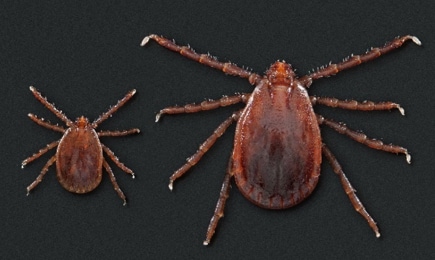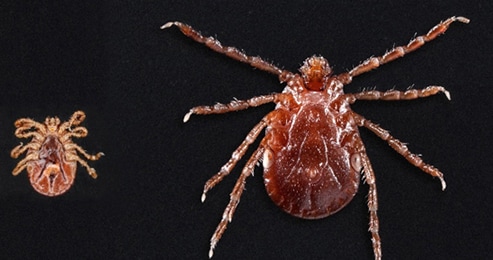What you need to know about Asian longhorned ticks - A new tick in the United States
What do Asian longhorned ticks look like?

Longhorned tick. Nymph and adult female, top view.

Longhorned tick. Nymph and adult female, underside.
What we know about Asian longhorned ticks
- Not normally found in the Western Hemisphere, these ticks were reported for the first time in the United States in 2017.
- Asian longhorned ticks have been found on pets, livestock, wildlife, and people.
- The female ticks can lay eggs and reproduce without mating.
- Up to thousands of ticks may be found at a time, or on an animal.
What we know about Asian longhorned ticks in the U.S.
- In other countries, bites from these ticks can make people and animals seriously ill. As of October 2, 2018, no harmful germs have been found in the ticks collected in the United States. Research is ongoing.
- Researchers are looking for these ticks to find out where they live.
- As of October 2, 2018, longhorned ticks have been found in Ark., Conn., Md., N.C., N.J., N.Y., Pa., Va., W.Va.
What you should do if you think you have found an Asian longhorned tick
- Remove any tick from people and animals as quickly as possible.
- Save the ticks in rubbing alcohol in a jar or a ziplock bag, then:
- Contact your health department about steps you can take to prevent tick bites and tickborne diseases.
- Contact a veterinarian for information about how to protect pets from ticks and tick bites.
- Contact your state agriculture department or local agricultural extension office about ticks on livestock or for tick identification.





















.jpg)












No hay comentarios:
Publicar un comentario